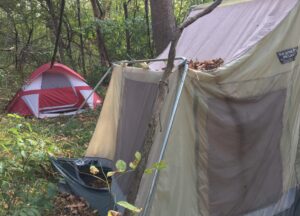
The purpose of this hearing is to raise awareness and advocate for funding for the critical issue of students experiencing homelessness in Philadelphia.Reports from the Pennsylvania Department of Education (PDE) and the School District of Philadelphia (SDP) show that 8,363 children and youth were identified as homeless in School Year (SY) 2021-2022 in Philadelphia, a significant increase from previous years.Experts say they anticipate the following school year to be over 10,000 children and students.
Subtitle VII-B of the McKinney-Vento Homeless Assistance Act (per Title IX, Part A of the Elementary and Secondary Education Act, as amended by the Every Student Succeeds Act) defines homeless as follows:
An individual or family who lack a fixed, regular, and adequate nighttime residence. This definition includes substandard housing, couch surfing, overcrowding, as well as staying in transitional housing, emergency housing, or living in a place not meant for human habitation.

The Office of Education for Children and Youth Experiencing Homelessness (ECYEH) coordinates services for students experiencing homelessness and ensures their rights to services through the McKinney Vento Law such as transportation, enrollment, and uniform assistance. ECYEH is a federally-funded program managed by PDE, which contracts with eight regions throughout the state for local implementation, including to the SDP. The SDP uses the funds for staffing, to train school personnel in 300 public district and charter schools and provide direct services like uniforms, transportation, mentoring, summer programming, school supplies, and more.
In 2023, the SDP received American Rescue Plan (ARP) funding that allowed the ECYEH department to expand services and supports by funding 3 community based programs to aid in identifying and supporting these students, a liaison between the Office of Homeless Services (OHS) and SDP to identify students and families as they seek emergency housing, and program coordinators in the highest need schools. These funds, however, expire and there is currently no plan to replace the funds leaving the much needed expansion of services at risk of ending during a time when the need is only increasing.
Communities, policymakers, and educational institutions play a critical role in providing adequate resources and support to students experiencing homelessness. Students facing homelessness often encounter barriers to accessing quality education, stable housing, and essential support services. The testimonies in this hearing will shed light on the harsh realities and hardships experienced by these students on a daily basis.
Around 75% of students identified were couch surfing or double up leaving them ineligible for housing support through the city’s Office of Homeless Services. These programs and support provide crucial and never before seen support to address barriers to housing and education for a population whose hardships are largely unseen.
Students experiencing homelessness experience higher truancy rates than their peers. In the 2021-22 school year, the percentage of students experiencing homelessness in the District with ten or more unexcused absences was 59%, compared to 45% for all District students, an increase for both from 2018-19 (prior to the pandemic). The highest percentage of truancy for both District and students experiencing homelessness was in 12th grade, according to the School District data.
Addressing housing barriers for young people now can help prevent future episodes of homelessness particularly when we address the barriers to education and support students in completing High School. According to the United States Interagency Council on Homelessness, Youth with less than a high school diploma or GED have a 346% higher risk of experiencing homelessness than youth with at least a high school degree. Additionally, The unemployment rate for someone with less than a high school diploma is almost three times that of someone with a bachelor’s degree. Removing barriers to housing and education is crucial to provide these children and youth an opportunity to succeed and complete their education.
Addressing student homelessness is an equity issue. From the SDP data, 55% of students experiencing homelessness were Black or African American and 93.6% are students of color. Data from the city’s Office of Homeless Services states 78% of all people seeking housing support are Black or African American. It is estimated about 40% of all youth experiencing homelessness are LGBTQ. If we fail to act and invest in the well being of these students, we run the risk of exacerbating social, racial, and economic disparities within our community.
Advocates, stakeholders, and community members alongside youth and families with lived experience of homelessness call for increased awareness and advocacy to address the systemic issues contributing to student homelessness stressing the need for comprehensive policies, funding initiatives, and programs that prioritize the well-being and academic success of students facing housing instability.
We are requesting 3 million dollars to be part of a transfer ordinance in Fall of 2024 in order to maintain the current support and the expanded ECYEH services and partnerships.
We cannot afford to leave this issue unaddressed as the consequences for children, youth, and families as well as our community are too grave to turn away from. Together we can break down barriers, build up futures, and end student homelessness.